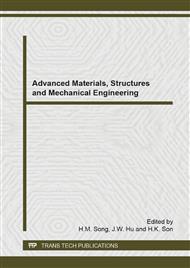p.765
p.770
p.776
p.782
p.787
p.792
p.797
p.803
p.809
An Investigation of Fluoride Release from Orthodontic Elastomeric Ligatures
Abstract:
Objective: The study aimed to investigate the amount of fluoride release from 3 brands of elastomeric ligatures in vitro, after exposure to daily fluoride mouthrinse. Materials and Methods: The study used 3 brands of elastomeric ligatures (Morelli, Brazil; Unitek, USA; Thai, Thailand). Two elastomeric ligatures from each brand were moistened by de-ionized water and then divided into control and test groups (n=5 per group). In both groups, elastomeric ligatures were placed in individual plastic bottle with 3 ml of de-ionized water. However, In the test group, They were exposed to fluoride mouthrinse (250 ppm fluoride/0.05%NaF) for 1 minute daily. All samples were stored at 37°C for 1, 3, 5, 7 days. After the end of each observation period, the amount of fluoride release in de-ionized water was measured by fluoride ion electrode. The data were analyzed by Kraskal-Wallis and Mann-Whitney U tests (p<0.05). Results: Amount of fluoride release in test group was greater than in the control group in all 3 brands. Within 7 days of daily fluoride exposure, the fluoride released from elastomeric ligatures was continuously increased. Fluoride release from Morelli (0.067±0.013 ppm) and Unitek (0.067±0.012 ppm) were significantly higher than Thai (0.040±0.03 ppm). The fluoride level measured from Morelli and Unitek were not significantly different. Conclusion: The orthodontic elastomeric ligatures can absorb fluoride from mouthwash and release the detectable amount of fluoride within seven days. This fluoride might help prevention of enamel decalcification adjacent to the bracket during orthodontic treatment.
Info:
Periodical:
Pages:
787-791
Citation:
Online since:
September 2014
Price:
Сopyright:
© 2014 Trans Tech Publications Ltd. All Rights Reserved
Share:
Citation:


